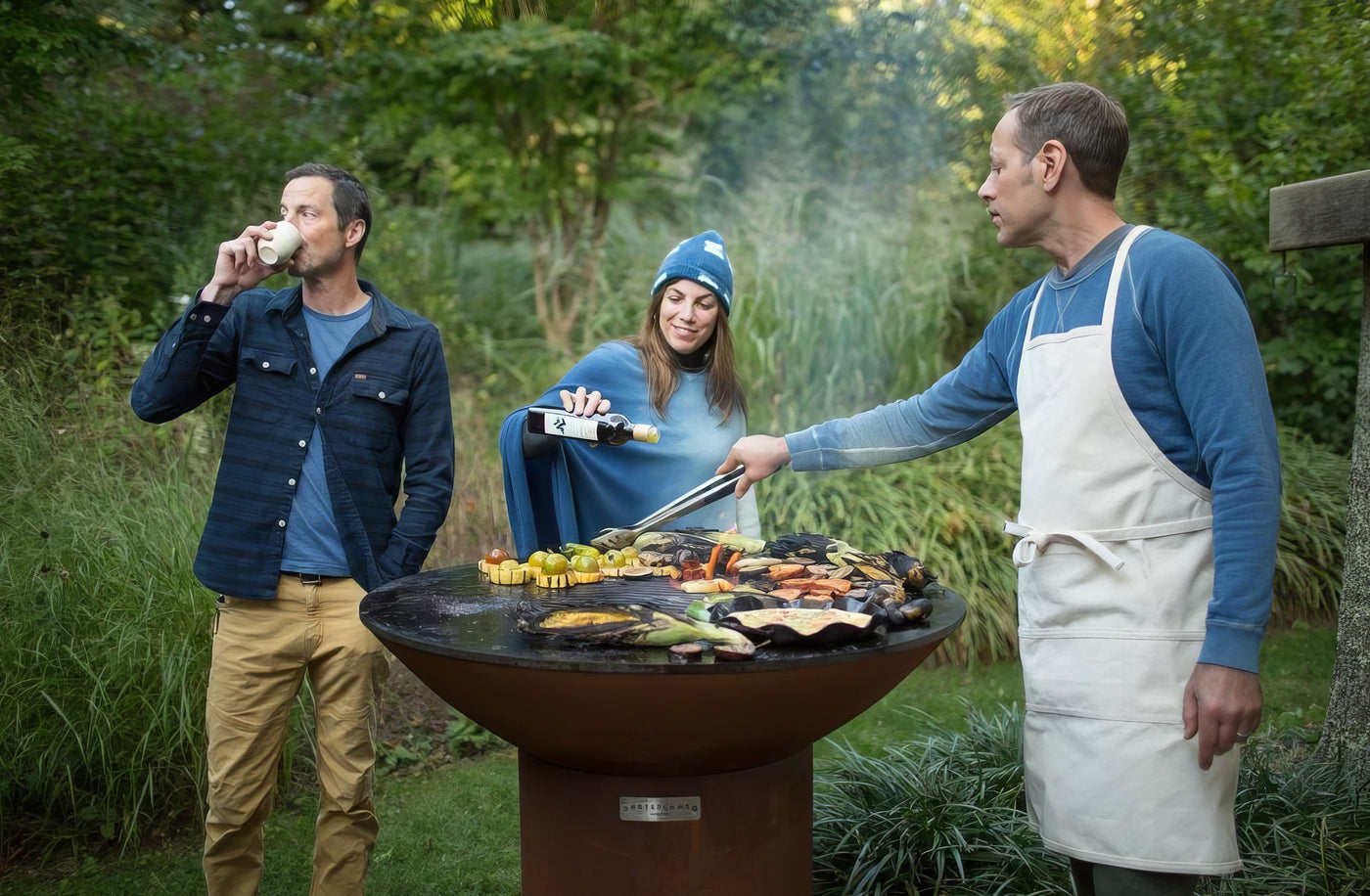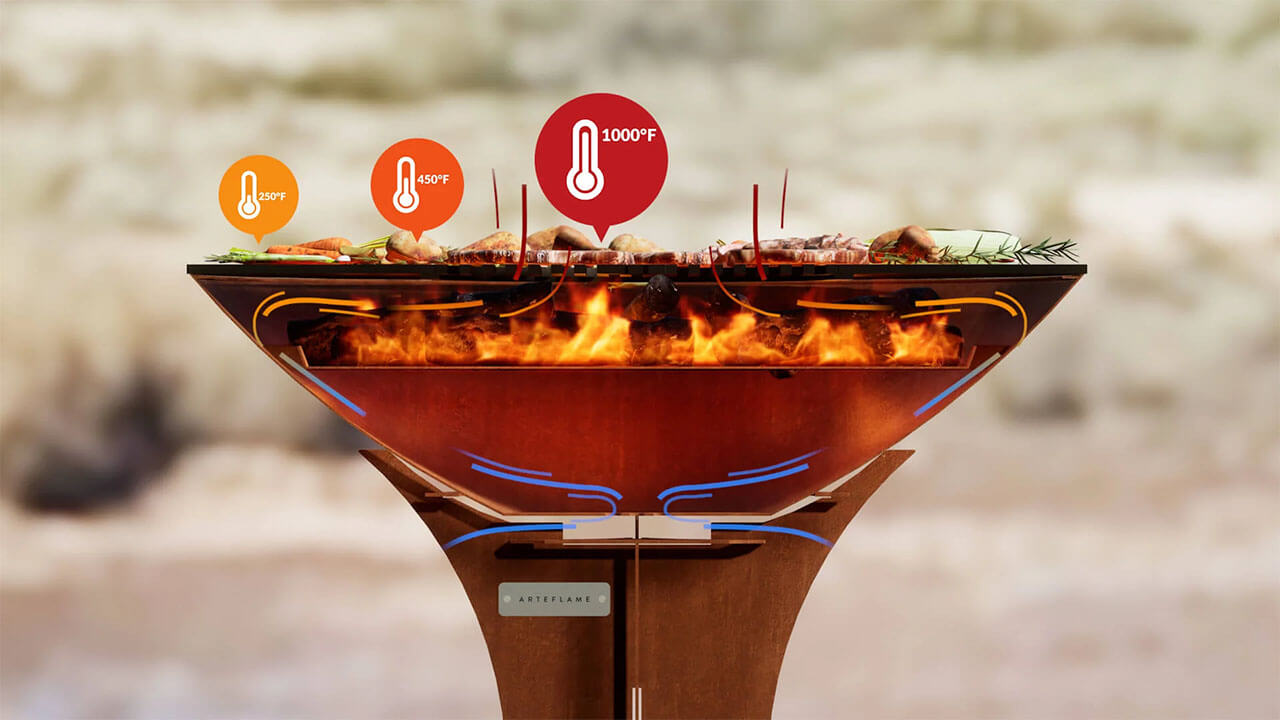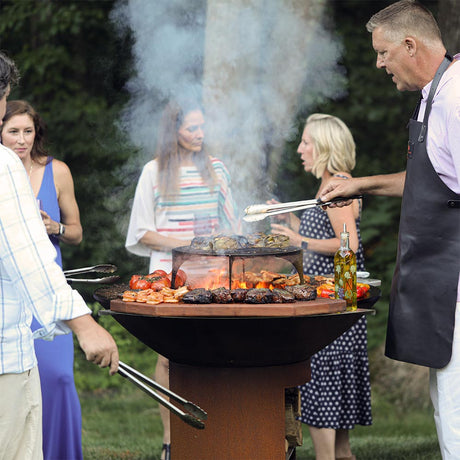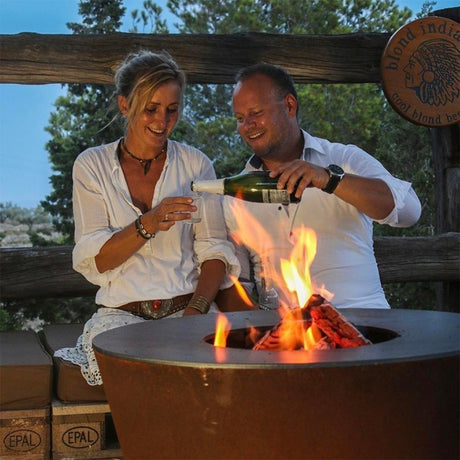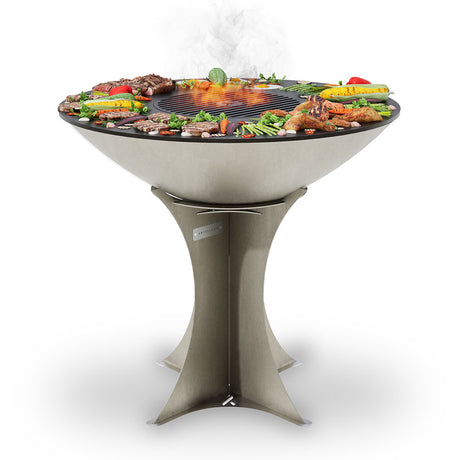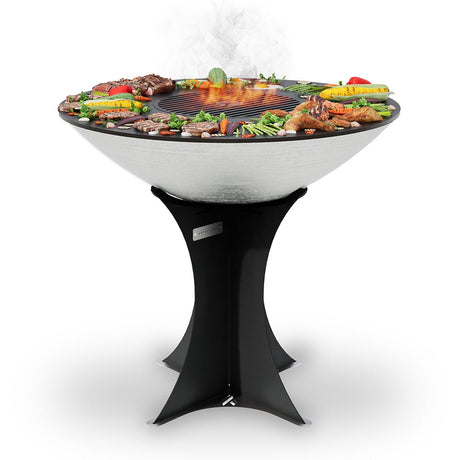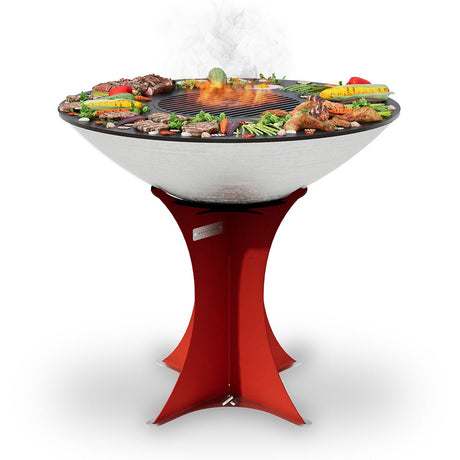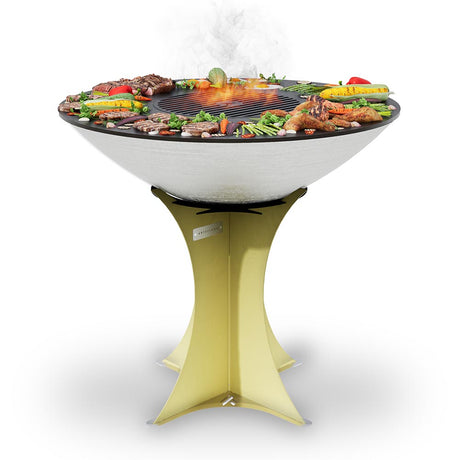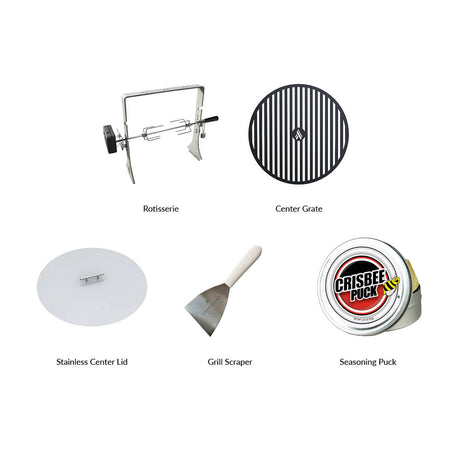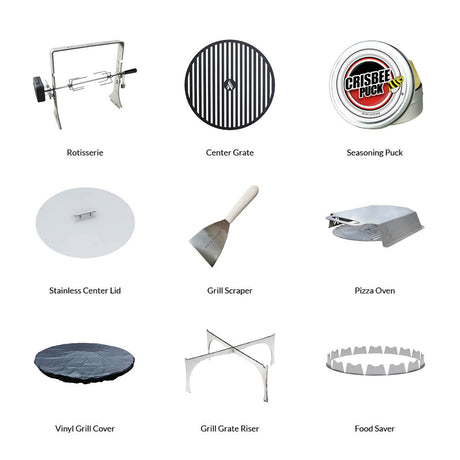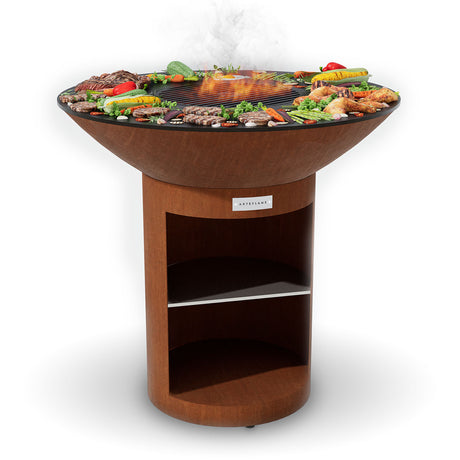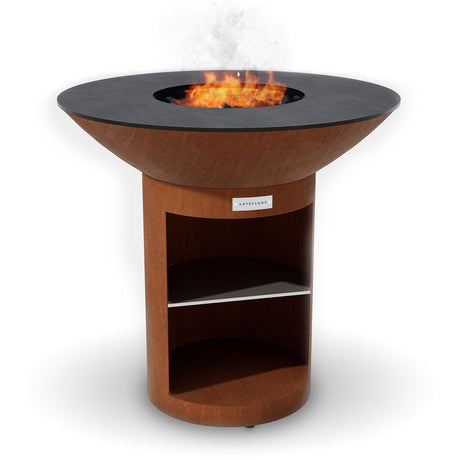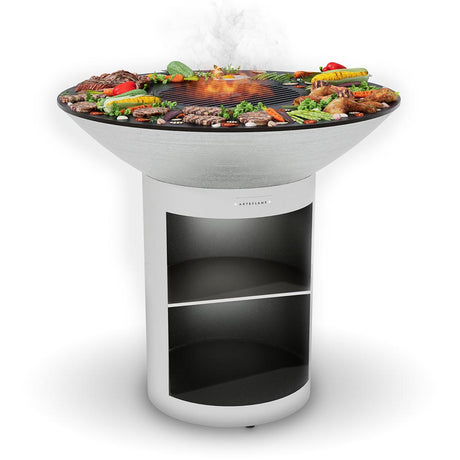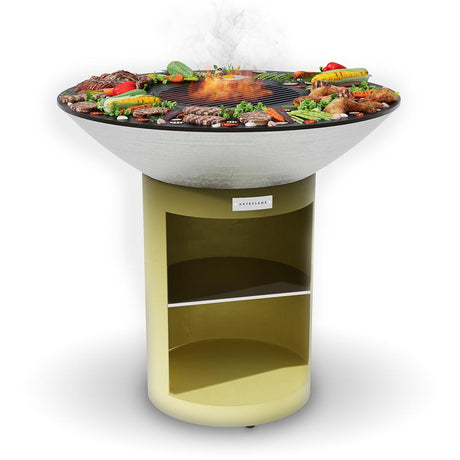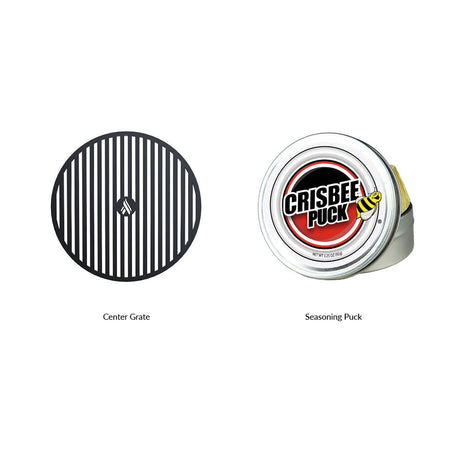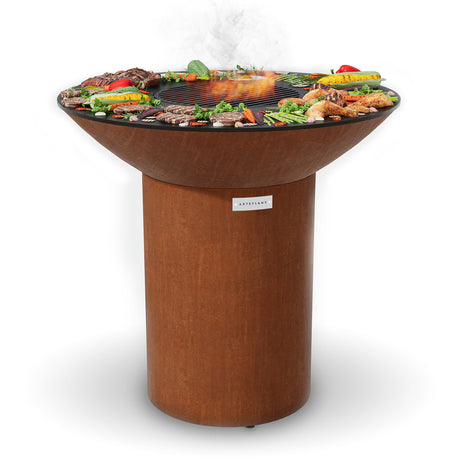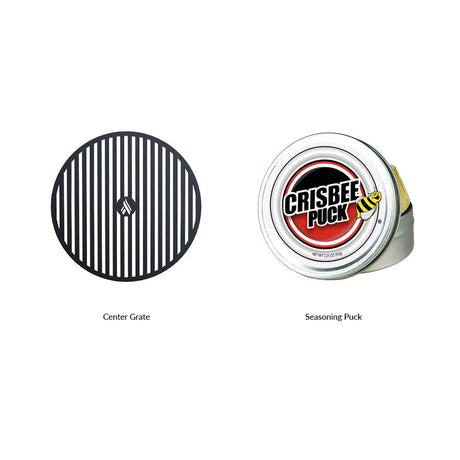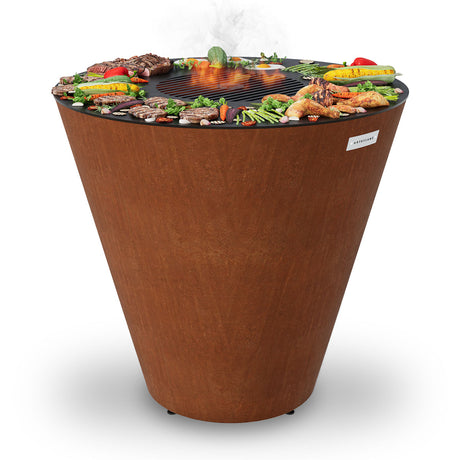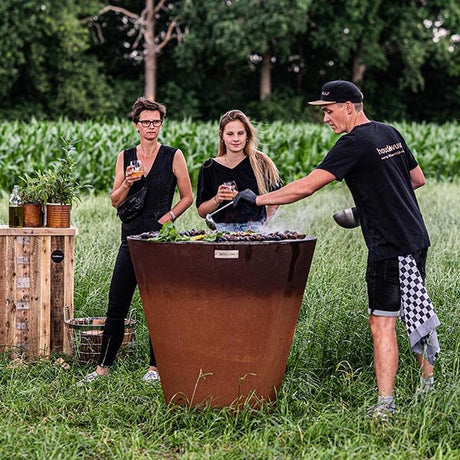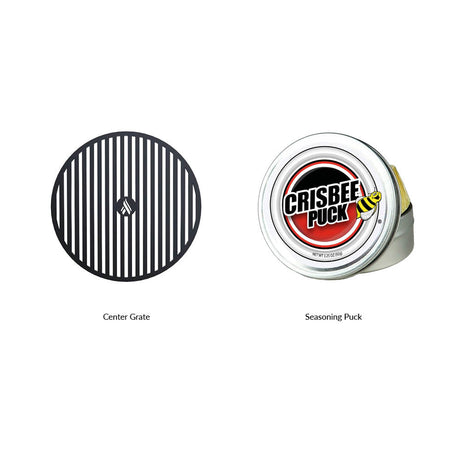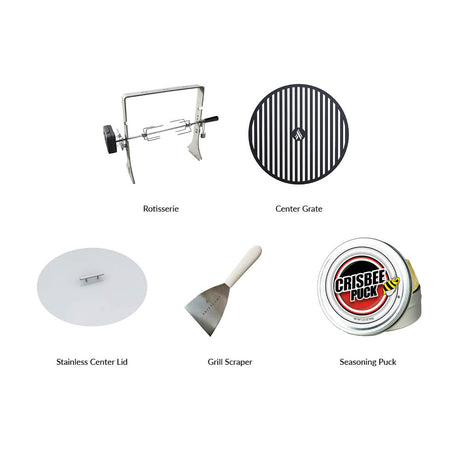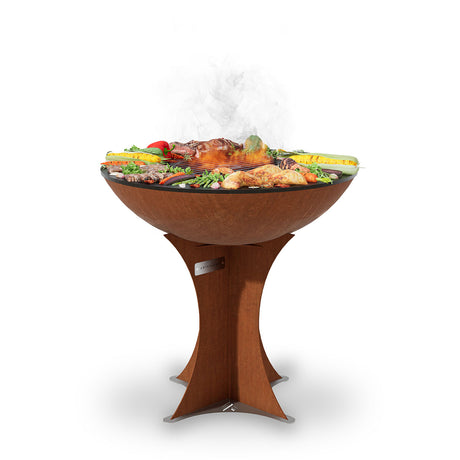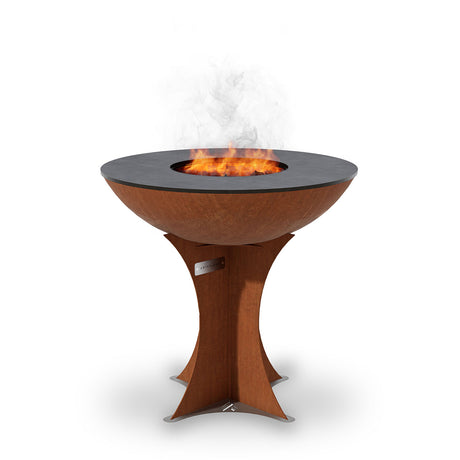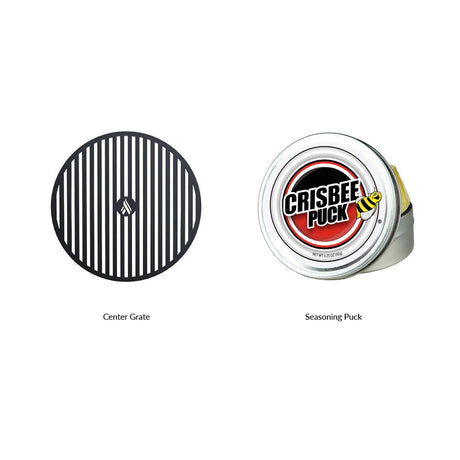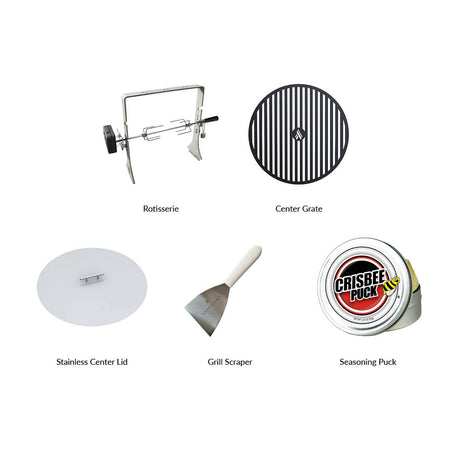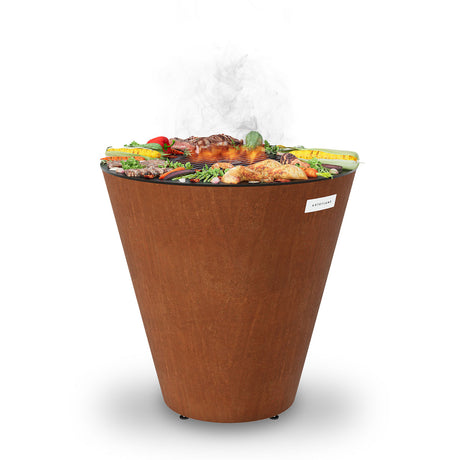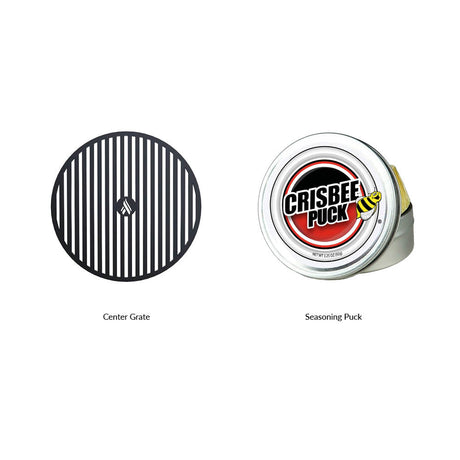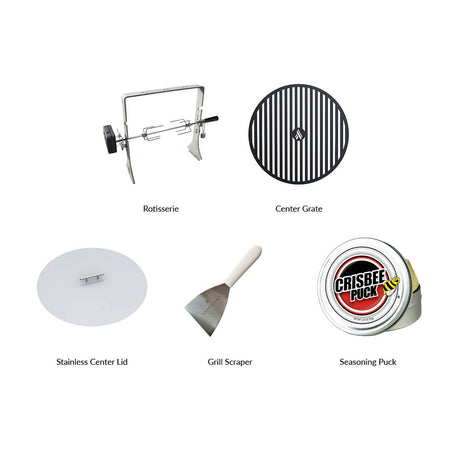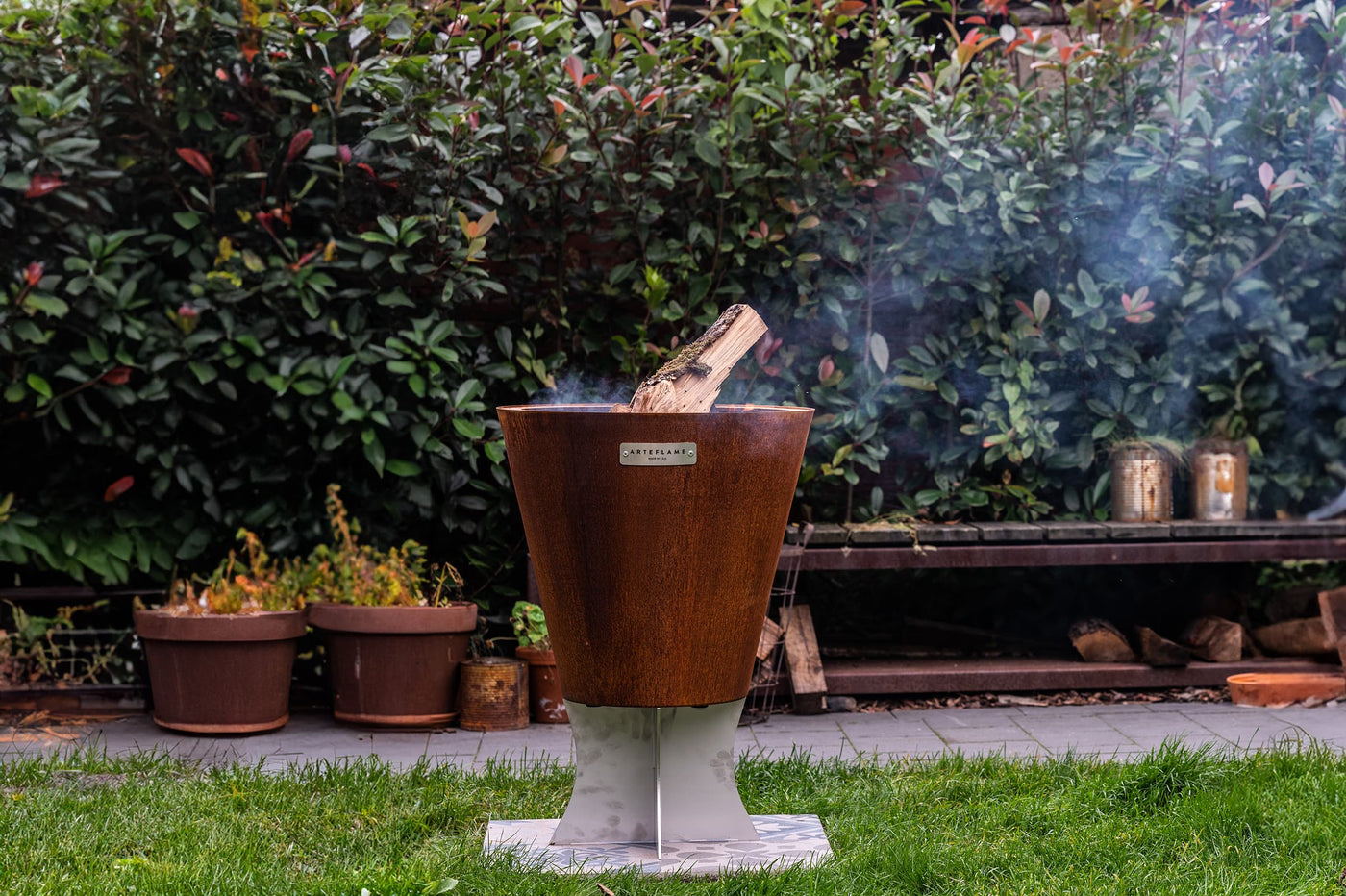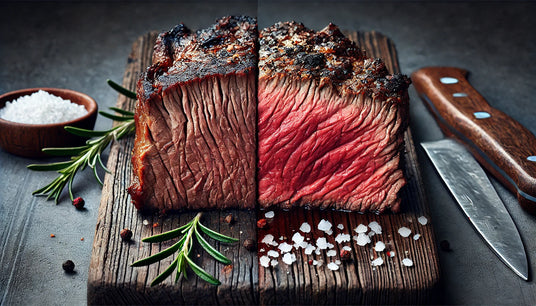
HVILKEN ER BEDST?
For steak-entusiaster er valget af den rigtige grill grundlaget for en exceptionel grilloplevelse. Den første store beslutning? Træ eller trækul kontra gas. Dette valg definerer ikke kun smagen af din mad, men også niveauet af kontrol og håndværk, du bringer til grillen. Lad os undersøge, hvorfor træ- og kulgrill står i en liga for sig for dem, der higer efter perfektion.
Træ- og kulgrill forvandler grill til en kunstform, der tilfører dine bøffer rige, røgede smage, som gasgrill simpelthen ikke kan kopiere. Aromaen og smagen skabt af ægte træ eller kulbrændstof løfter dine måltider til gourmetstatus og leverer en uovertruffen dybde af smag. Ud over smagen tilbyder disse griller overlegen kontrol over temperaturen, så du kan finjustere varmen for hver ingrediens. Denne præcision sikrer, at hver bøf er stegt, tilberedt og serveret til perfektion, hvilket gør hver bid til et mesterværk. Hvis grillning er din passion, er der intet, der slår ægtheden og ydeevnen af en træ- eller kulgrill.
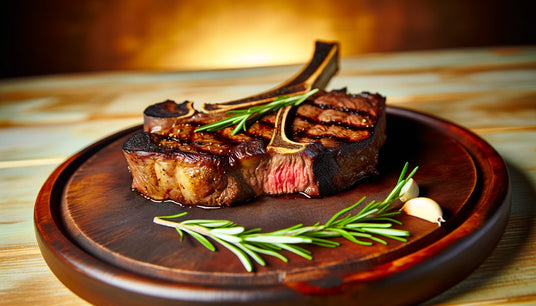
WHY IS A GREAT SEAR IMPORTANT?
When proteins and carbohydrates (sugars) are heated together, the Maillard reaction occurs, which is essential for developing rich and complex flavors in food.
Steakhouses sear over wood at 1,000°F to properly sear the food and enhance its flavor. Arteflame Grills excel at reaching these high temperatures and are perfect for achieving that coveted sear. The intense heat generated by wood or charcoal creates a beautifully caramelized crust on the food, resulting in a more enjoyable dining experience.
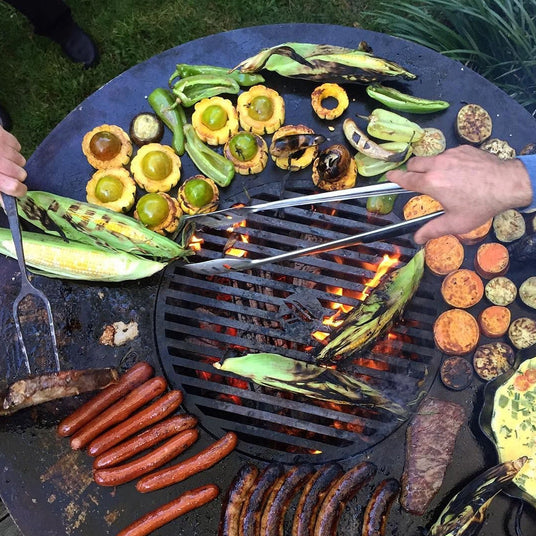
convenience and ease of use
On the other hand, gas grills provide convenience and ease of use. These grills come with adjustable burners that enable temperature control with a simple turn of a knob. Unlike wood grills, there's no need to wait for charcoal to ignite and reach the desired temperature. With a gas grill, you can start cooking immediately. Additionally, gas grills are easier to clean but do require much more maintenance compared to their wood counterparts. Arteflame grills use no valves, switches or gimmicks of any kind that can break.
To summarize, wood grills excel in the realm of flavor, infusing your food with an unrivaled smoky taste that delights the palate. The use of wood or charcoal provides much higher temperatures, ensuring perfect cooking results. On the other hand, gas grills offer convenience.
Armed with a thorough understanding of the benefits associated with both wood and gas grills, you're now equipped to make an informed decision. Consider your personal preferences, cooking style, and the overall grilling experience you desire. Ultimately, the choice between wood/charcoal and gas grills will depend on your specific needs and desires.

GASSMAG VS TRÆ ILDSMAG
Er du træt af at gå på kompromis med smagen af din grillmad? Se ikke længere! Løsningen på dit problem ligger i at vælge en brændefyret grill. Det er tid til at tage din grilloplevelse til næste niveau og nyde den udsøgte smag, som kun en brændefyret grill kan give.
Lad os være ærlige, den primære grund til, at folk foretrækker at grille frem for andre tilberedningsmetoder, er den uovertrufne smag, det giver til maden. Og når det kommer til smag, er grillning med træ i en liga for sig. Den unikke smag, som en brændefyret grill tilføjer til din mad, kan simpelthen ikke gentages andre steder.
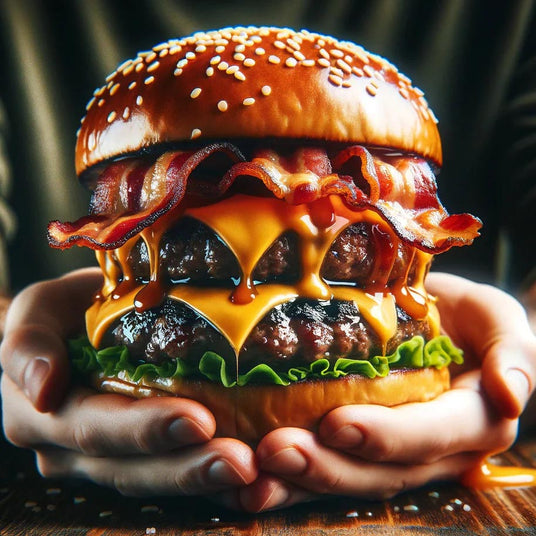
gas grills heat food indirectly
Gas grills heat food indirectly and are not well-suited for proper searing as they typically don't reach the high temperatures required. Although some high-end gas grills have sear burners, they are often small and limited in their capacity.
For those looking to truly indulge in the taste of barbecued food, charcoal and wood grills are the superior choice. The combination of their intense heat and the Maillard reaction guarantees a more flavorful and satisfying meal. So, if taste is your priority, opting for a charcoal or wood-fired grill is the way to go.

taste of wood-fired grilled food
Hvorfor træfyret grillmad står over resten
Hvad gør brændefyret grillmad så enestående? Det kommer ned til to nøgleelementer: brændende og røgsmag. Svidende låser saften ind, mens den skaber en karamelliseret, smagfuld skorpe, der forbedrer både tekstur og smag. I mellemtiden indgyder den naturlige aroma af trærøg din mad og giver den den uimodståelige røgede smag, du har lyst til - en smag, som ingen gasgrill kan gentage.
Apropos gasgrill, så overvej dette: propan- eller naturgassen, der brænder for dem, er den samme, som bruges i bybusser. Vil du virkelig have din mad udsat for dampene fra en busudstødning? Det er næppe den smag, du ville håbe på i din næste cookout.
Hvis du er klar til at løfte dit grillspil, er det tid til at skifte til en brændefyret grill. Sig farvel til kompromis og hej til uovertruffen smag. Med en brændefyret grill er hver bid et eventyr i røget, karameliseret perfektion. Foretag forandringen i dag - dine smagsløg vil takke dig!
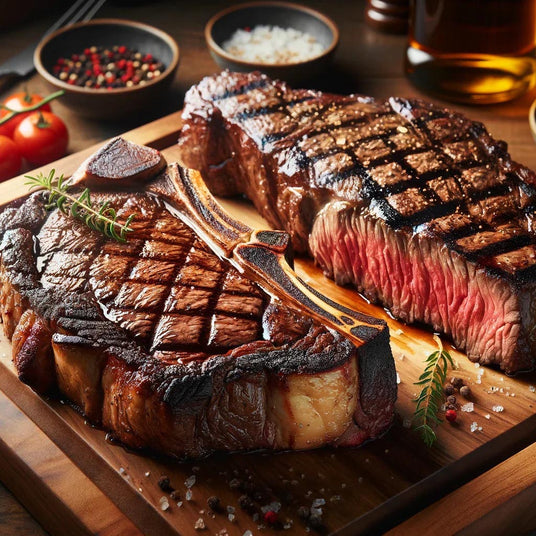
NØGLEN TIL FANTASTISKE BØFFER
Når det kommer til at opnå den perfekte bruning på kød, er det vigtigt at forstå begrænsningerne ved de fleste gasgrill. Selvom disse griller bestemt kan "brune" overfladen af din mad, kæmper de ofte for at nå de høje temperaturer, der kræves for optimal brænding.
Processen med bruning, kendt som Maillard-reaktionen, begynder omkring 350 ° F. For virkelig at opnå de bedste resultater skal temperaturen dog overstige 500°F. Desværre resulterer grillning ved en lavere temperatur i overdreven tilberedning af kødets indre, da bruningsprocessen tager for lang tid at finde sted.
Det, der adskiller svitningen fra simpel bruning, er den overfladedehydrering og sprødhed, det giver maden. Dette skaber en ønskværdig kontrast i tekstur mellem den ydre skorpe og det ømme indre. Steakhouses svitse deres mad ved 1.000 ° F; hvis du vil have steakhouse-kvalitet, har du brug for steakhouse-temperaturer.

nå temperaturer over 1.000°F
Når det kommer til brænding, er en kul- eller brændefyret grill essentiel. Få griller kan nå temperaturer over 1.000°F, hvilket giver den intense varme, der er nødvendig for at opnå den eftertragtede bruning.
Hvis du leder efter en alsidig grill, der brænder ved høje temperaturer og giver den bekvemmelighed og lethed som en gasgrill, skal du ikke lede længere end til Arteflame. Denne innovative grill kombinerer det bedste fra begge verdener og opnår steakhouse-svidetemperaturer, der overgår selv traditionelle kulgrills.
Så mens de fleste gasgrill er i stand til at brune mad, er det en udfordring at nå de temperaturer, der kræves for korrekt brænding. For dem, der søger den ultimative brændeoplevelse, anbefales en kul- eller brændefyret grill.
Arteflame XXL 40" Grills
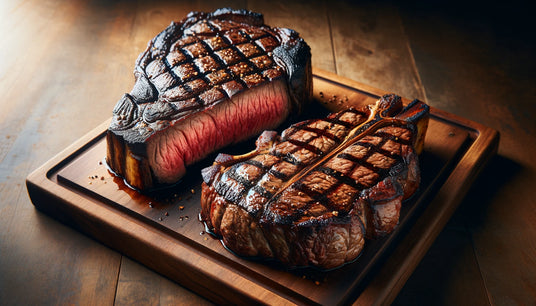
HIGH TEMPERATURE SEARING
FOR STEAKHOUSE QUALITY STEAKS
Steak aficionados, listen up! When it comes to achieving that perfect sear on your favorite cut of meat, the choice of equipment is vital. Steak restaurants rely on gas broilers capable of reaching scorching temperatures of 800°F - 1200°F or, even better, grill over a wood fire at these same temperatures.
To truly replicate the mouthwatering sear commonly found in steakhouses, it is essential to ensure that your gas grill can reach a minimum temperature of 800°F++. However, it's important to note that gas grills meeting these temperature criteria are relatively rare.
In contrast, Arteflame grills are known for their ability to generate intense heat, exceeding 1,000°F. These high temperatures are precisely what you need to create that sought-after edge-to-edge sear on your steak. So, if achieving a seared masterpiece is your goal, an Arteflame grill may be the ideal choice for you.
Remember, when it comes to grilling perfection, don't settle for anything less than the optimal temperature range. Whether you opt for a gas grill that can reach these high temperatures or choose the reliability of an Arteflame, the key is to ensure that your grilling equipment can deliver the intense heat required for a flawlessly seared steak.
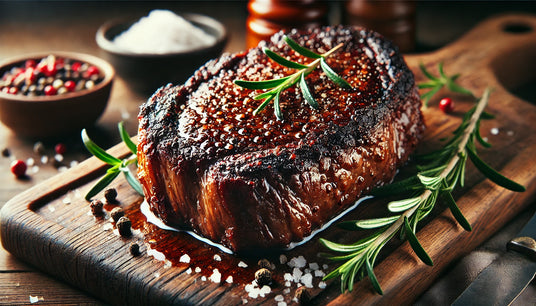
SEARING VS BROWNING,
WHAT'S THE DIFFERENCE?
Browning er en kulinarisk teknik, der, når den udføres med præcision, forvandler retter ved at forbedre smag og tekstur. At opnå et smukt brunet ydre og samtidig bevare den ideelle indre færdighed kræver dygtighed og forståelse. Arteflame-grillen udmærker sig i denne proces og tilbyder intens varme til hurtig, jævn brænding – perfekt til møre udskæringer som bøffer og koteletter, der leverer en lækker skorpe og saftigt interiør.
Til hårdere snit som bryst, er den omvendte brændemetode uvurderlig. Denne teknik hæver forsigtigt den indre temperatur over lav varme, før den afsluttes med en svitning ved høj varme, hvilket sikrer mørhed og smag hele vejen igennem.
At mestre bruning låser op for en symfoni af rige smage, der hæver enhver ret til en gourmetoplevelse. Uanset om det er at svitse bøffer til perfektion eller forvandle brystet til en mør delikatesse, er bruning en vigtig færdighed for enhver kulinarisk entusiast. Gennem praksis afslører denne kunst det fulde potentiale af dine ingredienser, og tager hvert måltid til uovertrufne højder.
ARTEFLAME XL 30" GRILLS
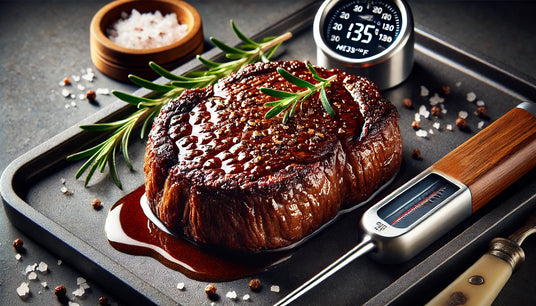
PRØV SØGNING TILBAGET
DEN PERFEKTE BØF
Den omvendte brændemetode: Perfekt tilberedte, Steakhouse-værdige resultater
Den omvendte stegemetode er en pålidelig teknik til at opnå læskende bøffer med en fejlfri stegning og mørt, saftigt interiør. Det er hemmeligheden bag at skabe resultater i steakhouse-kvalitet derhjemme. Denne metode starter med en intens bruning over 1.000 °F varme - låser smagen og skaber en rig, karameliseret skorpe. Efter stegning skal du flytte bøffen til den flade kogeplade for forsigtigt at hæve dens indre temperatur til den ønskede færdighed.
For en perfekt medium-sjælden bøf ved 135°F, fjern den fra grillen ved 120°F, da den vil fortsætte med at tilberede, mens den hviler. Denne balance mellem brænding ved høj varme og kontrolleret madlavning sikrer en uovertruffen madoplevelse - hver bid sprængfyldt med smag og saftighed. Omvendt brænding bringer det bedste frem i bøfferne og omdefinerer, hvad der er muligt på din grill.
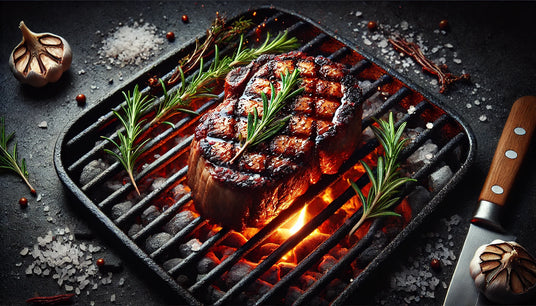
SOUS-VIDEO FØRST,
GRILL ANDEN
Løft din bøf: Kombiner Sous-Vide præcision med en perfekt kulgrill
For uovertruffen ømhed og præcision er mange topbøfhuse afhængige af sous-vide-teknikken. Denne metode involverer tilberedning af bøf i en vakuumforseglet pose ved en præcist kontrolleret temperatur, såsom 131°F i fire timer, for at opnå uovertruffen blødhed og mørhed.
For at højne smagen, parre sous-vide med den røgfyldte, højvarme kraft fra en kulgrill. Efter sous-vide-tilberedning, dup bøffen tør for at sikre en fejlfri svitning – et afgørende skridt, da fugt hæmmer karamelliseringen, der danner den perfekte skorpe.
Brug en grill opvarmet til 800 ° F eller højere for den ideelle bruning. Udsæt bøffen for intens varme kortvarigt på begge sider for at opnå et forkullet, smagfuldt ydre, samtidig med at det saftige, medium-sjældne indre bevares. Denne fusion af sous-vide ømhed og kulsarvet smag skaber en oplevelse i steakhouse-kvalitet, der er uden sidestykke.
Ved at mestre denne kombination og sikre en tør overflade, inden den svitses, vil du frigøre det fulde potentiale af din bøf – saftig, mør og sprængfyldt med smag.
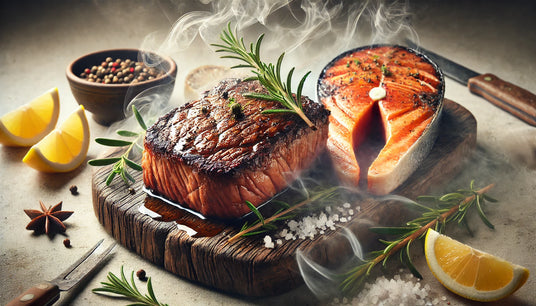
SMOKE FLAVOR AS SEASONING
Lås op for røgens smagfulde magi med kulgrill
Røg giver en karakteristisk smag, der er umulig at kopiere, og porøse fødevarer som brød absorberer hurtigt dens rige aromaer. Kulgrill giver en unik mulighed for at eksperimentere med træsorter, der hver bidrager med sin egen tydelige røgprofil. Hickory leverer dristige, rige smag perfekt til bøffer, mens els subtile noter fremhæver smagen af laks. Disse forskelle skyldes de naturlige forbindelser i træ, såsom lignin, som bidrager til dets unikke karakter.
Mens trækul selv brænder rent og producerer minimal røg, sker den sande smagsmagi, når træ eller træstykker tilføjes. Olier og dryp, der falder ned på kullene, kan producere uønskede smagsstoffer, hvilket gør tilsætning af kvalitetstræ afgørende for at opnå den ønskede røgede profil. Gasgrill kæmper for at kopiere dette, da røgkasser og løstsiddende låg ikke kan fange røgen effektivt.
Arteflame-grillen udmærker sig ved at skabe perfekt afbalancerede røgsmag. Dens konstruerede luftstrøm sikrer en næsten fuldstændig forbrænding, mens den stadig producerer lige nok røg til at give din mad smag. For øget røghed skal du blot tilføje frisk træ til bålet eller bruge den valgfrie grillrister til at placere din mad direkte i røgstrømmen. Denne alsidighed giver dig mulighed for at opnå den perfekte røgsmag hver gang, og løfter din grilloplevelse til gourmetniveauer.
